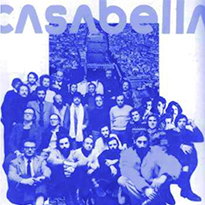The Italians do it better!
A contemporary interpretation of the radical movement.
Abstract
Italian architecture has long been characterized by what Vittorio Gregotti termed the "need for theory" (Gregotti, 1983), deeply shaped by the country's rich cultural tradition. This unique context has consistently led to a significant divergence in how architectural movements originating abroad are interpreted or "translated" within Italy. For instance, while modern architecture in Italy largely rejected the concept of tabula rasa—a notion embraced by many transalpine countries—Italy’s radical architecture, exemplified by groups like Superstudio, Archizoom, and the Global Tools, also stands in stark contrast to similar contemporary movements in Europe, such as Archigram or the Metabolists.
This article begins with a critical revaluation of the Italian radical movements, seeking to reconstruct their distinctiveness and theoretical contributions. It then delves into the reasons behind the current resurgence of interest in these movements and examines how they were received by contemporary critics. One could say, *nemo propheta in patria*—indeed, Italian radical architects were often viewed by the Italian critics, at best, as provocateurs or, at worst, as marginal figures who, instead of engaging in tangible change, sought refuge in utopian visions.
One of the few figures to grasp the significance and potential of radical architecture was Rem Koolhaas. Through a critical analysis of the numerous connections between the research of Archizoom, Superstudio, and Koolhaas's theoretical and design work, this paper aims to underscore the scientific relevance of the radical architectural experience, its contemporary relevance, and its potential to inspire a new and more effective response to today's crises.
Downloads

Downloads
Published
How to Cite
Issue
Section
License
Copyright (c) 2024 Paola Scala

This work is licensed under a Creative Commons Attribution 4.0 International License.
The authors keep their rights upon their work, although they transfer, in a non-exclusive way, the rights of exploitation (reproduction, publication, distribution, public dissemination and presentation) to the Journal. The authors are, therefore, free to enter additional, separate contracts for the non-exclusive distribution of the version of the work published in the Journal (for instance, by hosting in an institutional repository or publication in a book), provided credit is given that the work was initially published in this journal. The works are published under a Creative Commons Attribution 4.0 (CC BY 4.0) license.











